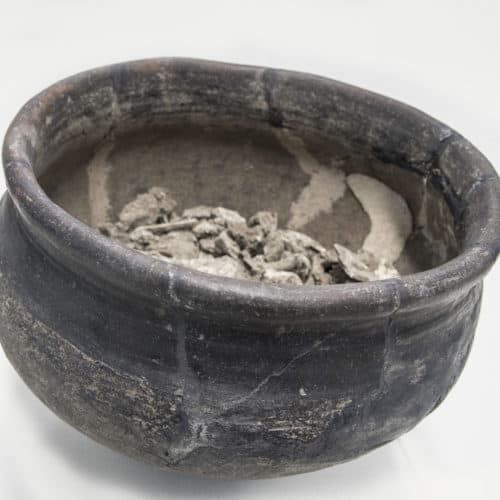Stone Age to Iron Age 11: cremation
This is a cremation urn. It contains the partly cremated (burnt) bones of a person who lived in Folkestone over 2000 years ago, which was during the Iron Age .
Most Iron Age people in Britain were cremated after they died. Their bodies were burnt outside, on an open fire, in a special ceremony attended by family and friends.
After the ceremony, the surviving pieces of charred bone were gathered up and placed in a pot, which was buried in the ground. Archaeologists call these pots cremation urns.
This cremation urn was buried on Folkestone’s East Cliff. It was discovered in 1924 when a team of archaeologists led by Samuel Winbolt were excavating the site of an impressive Roman villa.
This pot, and lots of other Iron Age finds discovered on the site, are evidence that the Romans weren’t the first people to live here. The site had already been occupied for many years.
Fascinating fact
As well as bones, cremation vessels sometimes contain items belonging to the dead person. This one contained a silver armlet and bronze brooch.

